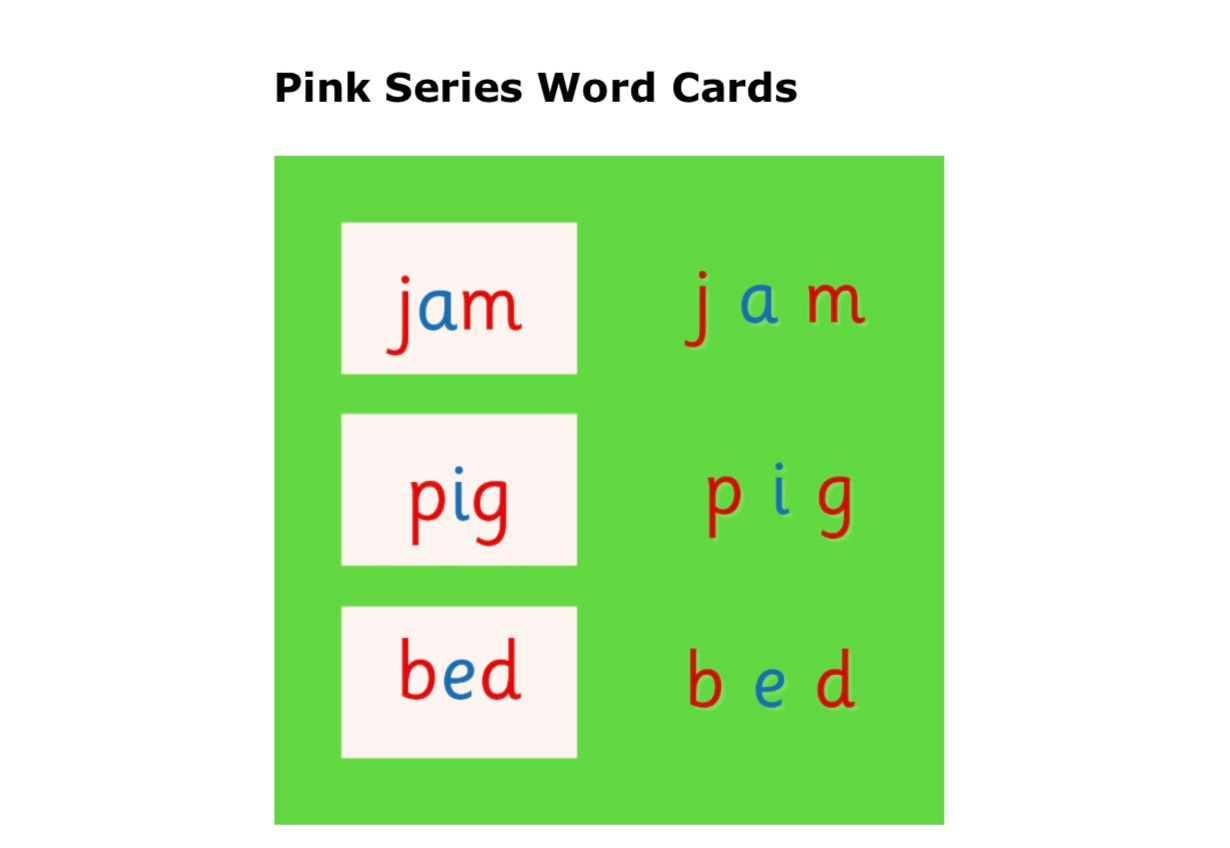Pink Word Cards: A Learning Game
The Quiet Game Returns: Independent Learning with the Pink Cards and Movable Alphabet
This is a beautiful, self-directed game for two children. I often observe my students deeply engaged in it for long stretches of time. Because there is no adult evaluating their work, and the control of error lies in the word card itself, the children feel free to explore. They often challenge themselves by selecting the longest pink words in the box, such as animal and camel. These longer words serve as points of interest, drawing them in and encouraging repetition. As their curiosity deepens, they frequently transition to Blue Series words on their own, having exhausted the pink ones. In this way, their progress is natural and joyful, with occasional pauses to seek a missing piece of knowledge from me or from an older child when they encounter a new or difficult word.
Using the large-format pink word cards and the movable alphabet, two children can play a game together. One child selects a card, and the other places it on the floor and forms the word using the movable alphabet. Then they switch roles. This is a game children play independently of an adult.
If you have only one child, you can play along, but avoid turning it into a teaching session. A toddler can also select cards for the older child, if this will be enjoyable for the older one. As always, do not ask children to read the words aloud—they will read them when they are ready to read aloud.
Remember not to use undersized pink cards. The letters on the card should be approximately the size of the large movable alphabet letters. And it is crucial that the cards are physically longer for the longest words because this is a key point of interest for the children.
In recent years, I have noticed that some teachers have been trained to allow children to use only the cards for which the teacher has given a formal presentation. This is not good. Children should feel free to explore the equipment in the classroom. If you have created the appropriate learning environment, they will come to get you if they feel in over their heads with a piece of equipment they’ve taken from the shelf. In that case, I give a simple presentation, or— if a child takes an advanced grammar box from the shelf because it looked so tempting — I offer an easier piece from the same series, but I never refuse to let them use the piece they’ve taken. I always make sure the child feels comfortable exploring the equipment.
If you find yourself in a classroom of new students, the key is to carefully curate the equipment on the shelves before school starts. Put advanced pieces in a closet for now.
And, my dear friends, do remember not to tinker with children as they work—no matter how absolutely cute and tempting they may be. Bring a book, not a device. Sit at your own table and do your own work.
My Pink Series cards are here on the Etsy shop 🙏 And the curriculum is on our Etsy shop here.



